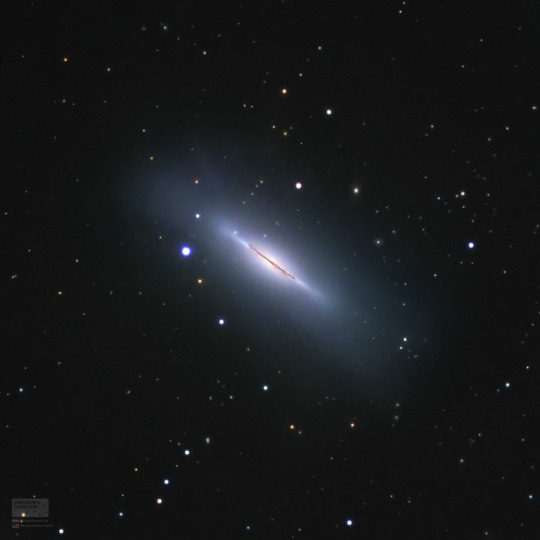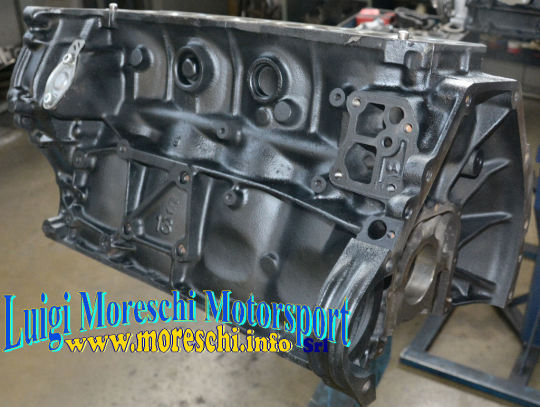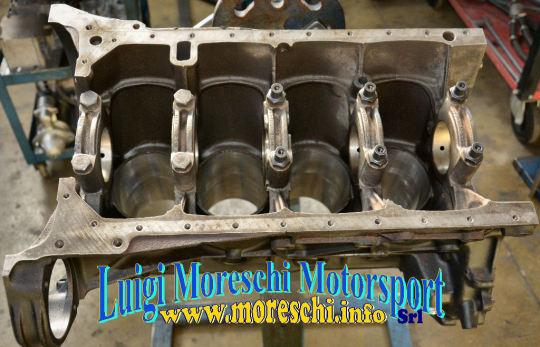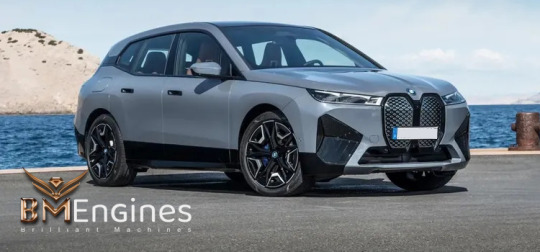#m102
Text



#dwedit#rtdedit#doctor who#tentoo#jackie tyler#mine#mdw4#m102#mjackie#favourite doctor lol#all i want is a pete's world special with tentoo rose jackie and a teenage tony lol
615 notes
·
View notes
Text

The Spindle Galaxy, M102 // Lorand Fenyes
M102 is a curious object in the history of the Messier catalog. Discovered by Méchain in 1781, Messier did not include coordinates of M102 in his final published catalog, leading to confusion as to which object Méchain observed.
In 1783, Méchain retracted his discovery and claimed that M102 was actually an accidental duplication of M101. Since then, astronomers over the centuries tried to figure out which galaxy Méchain found. French astronomer Camille Flammarion identified this galaxy, NGC 5866, as M101 in 1917.
Messier had written down directions to the galaxy as "Nebula between the stars o Boötis and ι Draconis..." Flammarion argued that those directions make no sense unless the Greek letter omicron (o) was in fact a lowercase theta (θ). In that case, the directions make sense and point straight towards NGC 5866.
#astronomy#astrophotography#messier marathon#galaxy#lenticular galaxy#spindle galaxy#messier#messier 102#M102#NGC 5866#draco
32 notes
·
View notes
Photo







Mercedes 190E 2.3 16 Cosworth engine block
Mercedes 190E 2.3 16v W201 engine block
For Cosworth-Mercedes M102 E23 engine, signed 102.983;
designed by Cosworth to compete with the BMW M3
Revised with:
Seal control
Bearing support check
Cylinder grinding Ø 96.00 mm
Base leveling
http://www.moreschi.info/magazzino.htm#mercedes
2 notes
·
View notes
Text
M102, Spindle
437 notes
·
View notes
Photo

2024 March 6
M102: Edge-on Disk Galaxy
Image Credit: NASA, ESA, Hubble; Processing: Ehsan Ebrahimian
Explanation: What kind of celestial object is this? A relatively normal galaxy -- but seen from its edge. Many disk galaxies are actually just as thin as NGC 5866, the Spindle galaxy, pictured here, but are not seen edge-on from our vantage point. A perhaps more familiar galaxy seen edge-on is our own Milky Way galaxy. Also cataloged as M102, the Spindle galaxy has numerous and complex dust lanes appearing dark and red, while many of the bright stars in the disk give it a more blue underlying hue. The blue disk of young stars can be seen in this Hubble image extending past the dust in the extremely thin galactic plane. There is evidence that the Spindle galaxy has cannibalized smaller galaxies over the past billion years or so, including multiple streams of faint stars, dark dust that extends away from the main galactic plane, and a surrounding group of galaxies (not shown). In general, many disk galaxies become thin because the gas that forms them collides with itself as it rotates about the gravitational center. The Spindle galaxy lies about 50 million light years distant toward the constellation of the Dragon (Draco).
∞ Source: apod.nasa.gov/apod/ap240306.html
156 notes
·
View notes
Text

M102
Part of my Ghost Figures Photography Series. New York City, NY.
2022
Website Facebook Instagram Twitter Redbubble Prints
#Night#City#Urban#Street#Architecture#Lofi#Anime#Cyberpunk#Outrun#Vaporwave#Bladerunner#Surreal#Anthony Presley#Anthonypresley#Moody#Photography#Design#photographers directory#photographerslife
166 notes
·
View notes
Text

82nd Airborne soldiers fires M102 howitzers during the brief fighting on Grenada, which resulted in the death of 45 Grenadians, 59 Cubans and 19 U.S. soldiers. Oct 25-Nov 3 1983.
4 notes
·
View notes
Text
M102: Kenarından Disk Galaksi
Günün Astronomi Görseli 6 Mart 2024
Görsel & Telif: NASA, ESA, Hubble; Görüntü İşleme: Ehsan Ebahimian
Bu ne tür bir gök cismi? Nispeten normal bir galaksi ama kenarından görülüyor. Birçok disk galaksisi aslında burada görülen Spindle galaksisi NGC 5866 kadar ince olmasına rağmen bizim bakış noktamızdan kenardan görülmez. Kenardan görülen belki de daha tanıdık bir galaksi kendi Samanyolu…

View On WordPress
0 notes
Text
The Evolution of BMW Engine Design: From Classic to Modern

BMW is one of the most iconic and respected car brands in the world, known for its engineering excellence, performance and innovation. But how did BMW achieve such a reputation? How did its engine design evolve over the years, from the classic models to the modern ones? In this article, we will explore the history and development of BMW Engine, from the first four-cylinder unit to the latest hybrid and electric powertrains.
The Evolution of BMW Engine Design: From Classic to Modern
BMW is one of the most iconic and respected car brands in the world, known for its engineering excellence, performance, and innovation. But how did BMW achieve such a reputation? How did its engine design evolve over the years, from the classic models to the modern ones? In this article, we will explore the history and development of BMW engine design, from the first four-cylinder engines to the latest hybrid and electric ones. We will also look at some of the most influential and popular BMW models that showcase the evolution of its engine design.
The Origins of BMW Engine Design: The Four-Cylinder Engines
BMW was founded in 1916 as a manufacturer of aircraft engines, but after World War I, it was forced to stop producing them due to the Treaty of Versailles. In 1923, BMW entered the motorcycle market with the R32, which featured a horizontally opposed twin-cylinder engine. This engine design was later used in some of the first BMW cars, such as the 3/15 and the 303. However, BMW soon realized that it needed a more powerful and efficient engine design to compete in the car market. In 1933, BMW introduced its first four-cylinder engine, the M78, which had a displacement of 1.2 liters and produced 30 horsepower. This engine was used in the 315 model, which was the first BMW car to feature the famous kidney-shaped grille. The M78 engine was later improved and enlarged to produce more power and torque, and was used in various models such as the 319, 320, and 328.
The Rise of BMW Engine Design: The Six-Cylinder Engines
In 1936, BMW made a breakthrough in engine design with the introduction of its first six-cylinder engine, the M328. This engine had a displacement of 2 liters and produced 80 horsepower. It was also one of the first engines to use hemispherical combustion chambers and inclined valves, which improved airflow and combustion efficiency. The M328 engine was used in the legendary 328 model, which was one of the most successful sports cars of its time, winning many races and setting records. The M328 engine was also used in other models such as the 327 and the 335. After World War II, BMW resumed its car production with the 501 model, which featured a modified version of the M328 engine with a displacement of 2.6 liters and a power output of 65 horsepower. This engine was later upgraded to produce 100 horsepower and was used in the 502 model, which was the first German car to feature a V8 engine.
The Expansion of BMW Engine Design: The V8 and V12 Engines
In 1954, BMW introduced its first V8 engine, the M60, which had a displacement of 2.6 liters and produced 100 horsepower. This engine was used in the 502 model, which was also known as the "Baroque Angel" due to its elegant design. The M60 engine was later enlarged to 3.2 liters and produced up to 160 horsepower. It was used in various models such as the 503, 507, and 3200 CS. In 1965, BMW introduced its first V12 engine, the M70, which had a displacement of 5 liters and produced 300 horsepower. This engine was used in the luxurious 750i model, which was also known as the "Shark" due to its sleek design. The M70 engine was later improved and used in other models such as the 850i and the Z8.
The Revolution of BMW Engine Design: The Turbocharged Engines
In 1973, BMW introduced its first turbocharged engine, the M102, which had a displacement of 2 liters and produced 170 horsepower. This engine was used in the iconic 2002 Turbo model, which was one of the first production cars to feature a turbocharged engine. The M102 engine was later replaced by the M106, which had a displacement of 3.2 liters and produced up to 252 horsepower. It was used in various models such as the E23 (7 Series), E24 (6 Series), E28 (5 Series), and E30 (3 Series). In 1985, BMW introduced its first diesel turbocharged engine, the M21, which had a displacement of 2.4 liters and produced up to 115 horsepower. It was used in various models such as the E28 (5 Series), E30 (3 Series), E34 (5 Series), E36 (3 Series), E38 (7 Series), E39 (5 Series), E46 (3 Series), E53 (X5), E60 (5 Series), E65 (7 Series), E90 (3 Series), F10 (5 Series), and F01 (7 Series).
The Innovation of BMW Engine Design: The Valvetronic and VANOS Engines
In 1998, BMW introduced its first Valvetronic engine, the N42, which had a displacement of 1.8 liters and produced up to 143 horsepower. Valvetronic is a technology that allows the engine to vary the lift and duration of the intake valves, which improves fuel efficiency, power, and emissions. The N42 engine was used in various models such as the E46 (3 Series), E60 (5 Series), E65 (7 Series), E85 (Z4), E90 (3 Series), E92 (3 Series), and E93 (3 Series). In 2001, BMW introduced its first VANOS engine, the N62, which had a displacement of 4.4 liters and produced up to 333 horsepower. VANOS is a technology that allows the engine to vary the timing of the intake and exhaust valves, which improves performance, torque, and emissions. The N62 engine was used in various models such as the E53 (X5), E60 (5 Series), E63 (6 Series), E65 (7 Series), E70 (X5), and E71 (X6).
The Diversity of BMW Engine Design: The Hybrid and Electric Engines
In 2009, BMW introduced its first hybrid engine, the N63/S63, which had a displacement of 4.4 liters and produced up to 555 horsepower. This engine was a twin-turbocharged V8 engine that was paired with an electric motor and a battery pack, which improved fuel economy, performance, and emissions. The N63/S63 engine was used in various models such as the F01 (7 Series), F10 (5 Series), F12 (6 Series), F15 (X5), F16 (X6), F85 (X5 M), F86 (X6 M), G11 (7 Series), G12 (7 Series), G30 (5 Series), G32 (6 Series), G05 (X5), G06 (X6), G07 (X7), G15 (8 Series), G16 (8 Series), and G20 (3 Series). In 2013, BMW introduced its first electric engine, the i3, which had a power output of 170 horsepower. This engine was a fully electric motor that was powered by a lithium-ion battery pack, which offered zero emissions, high efficiency, and instant torque. The i3 engine was used in the i3 model, which was also known as the "Megacity Vehicle" due to its compact and futuristic design.
The Future of BMW Engine Design: The Hydrogen Engines
In 2015, BMW introduced its first hydrogen engine, the B57H, which had a displacement of 3 liters and produced up to 275 horsepower. This engine was a modified version of the B57 diesel engine that was adapted to run on hydrogen gas instead of diesel fuel, which offered clean and renewable energy, low noise, and high performance. The B57H engine was used in the 5 Series GT Hydrogen Fuel Cell model, which was a prototype vehicle that demonstrated BMW's vision for the future of mobility. BMW is currently working on developing more advanced and efficient hydrogen engines that can be used in mass production vehicles.
The Evolution of BMW Engine Design
BMW has been one of the pioneers and leaders in engine design for almost a century, producing some of the most innovative, powerful, and efficient engines in the automotive industry. From the classic four-cylinder engines to the modern hybrid and electric ones, BMW has always strived to improve its engine design with new technologies, materials, and concepts. BMW has also created some of the most iconic and influential car models that showcase its engine design evolution, such as the 328, the 2002 Turbo, the 750i, the Z8, the X5 M, and the i3. BMW's engine design evolution reflects its passion for engineering excellence, performance, and innovation.
FAQs
What is BMW's motto?
BMW's motto is "The Ultimate Driving Machine", which reflects its commitment to delivering high-quality vehicles that offer a superior driving experience.
What is BMW's logo?
BMW's logo is a stylized representation of a propeller in motion, which symbolizes its origins as an aircraft engine manufacturer.
What is BMW's most powerful engine?
BMW's most powerful engine is the S70/2, which had a displacement of 6 liters and produced 627 horsepower. It was used in the McLaren F1 model, which was one of the fastest production cars ever made.
What is BMW's most efficient engine?
BMW's most efficient engine is the i3 REx, which had a power output of 170 horsepower and a fuel consumption of 0.6 liters per 100 kilometers.
Read the full article
0 notes
Text










RTD Rewatch
Episode 4x13: Journey's End
524 notes
·
View notes
Text
もぉぉ~♡
ブログ更新しました( ´ ▽ ` )ノ
「ええわ」の使い方は様々です。
女性に優しい男性は鑑ですね・・・ややや、バウムオプティクスです。もしくは下心しかないか。(笑)
さて(笑)、お客さまのご紹介です( ´ ▽ ` )ノ
XIT M105 008 / M102 010
島原が生んだ男前!三度のメシより妻が好き、河内長野のヒロくんと言えば・・・でお馴染みの?(笑)ヒロさんと、ヒロさんがしがみついて離さない(笑)愛妻・ジュンコさんのお二人です♡
6月のXIT(エックスアイティー)のイベントで素敵なメガネを選んでいただきました( ´ ▽ `…

View On WordPress
0 notes
Text

The Spindle Galaxy, M102 // Johnny Qiu
One of the most striking features of this lenticular galaxy is the dust lane which is seen almost exactly edge-on. This large dust lane is unusual for a lenticular galaxy, as most lenticulars only have one near their central regions, not spreading out across the entire disk.
Heber Curtis (1872-1942) remarked on this dust lane in 1918: "Its most striking feature is a narrow, clear-cut dark lane along the middle, marking a slight angle with the major axis."
#astronomy#astrophotography#messier marathon#galaxy#lenticular galaxy#spindle galaxy#messier#messier 102#M102#NGC 5866#draco
18 notes
·
View notes
Text

HP LaserJet Pro MFP M132, HP LaserJet Pro M104, HP LaserJet Pro MFP M130, and HP LaserJet Pro M102 Printers are all compatible with the HP 19A Imaging Drum.
Even when printed on regular paper, it creates prints with crisp and clear text.
HP printing systems with Original HP Toner Drum are readily recyclable and constructed with environmental standards in mind.
The laser technology included in the drum ensures the highest print quality.
0 notes
Text
5-7 Jun | Responding to a Brief: D&AD New Blood Awards
SAS - Responding to a Brief
Monday 5th and Tuesday 6th will be off timetable to work at home / spaces within the College. Please attend your Wednesday lesson in M102.
Over this final half term, you will work on Progression Activities.
This will revolve around preparing you with skills for second year, as well as gaining work experience and portfolio building. This week you will work independently on completing the New Blood Awards - Brief In 2023 online course, where you will learn more about how to respond to a real client brief.

TASK 1: Please sign up to the New Blood Awards - Brief In 2023 course using your college e-mail address.
Make a note of your login details to access the course again in future lessons.
TASK 2: Create a new Powerpoint online document, titling it with your full name and ‘Responding to a Brief’. On the first slide, please write: ‘Responding to a Brief: D&AD New Blood Awards’. Share editing access with [email protected].
TASK 3: You will now have this week to complete the New Blood Awards - Brief In 2023 online course. Be sure to watch all videos in full and complete every section - you don’t need to rush through it.
As you work through the course, please answer these questions in your new Powerpoint. Try to give each question it’s own slide in your Powerpoint to space things out – you should end up with min 24 slides. Answer in your own words!

Extension Project:
https://digipubl6.tumblr.com/post/719454901121466368/extension-project-design-a-new-city-college
1 note
·
View note

